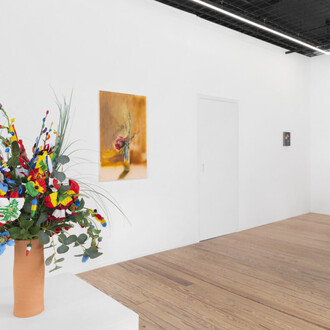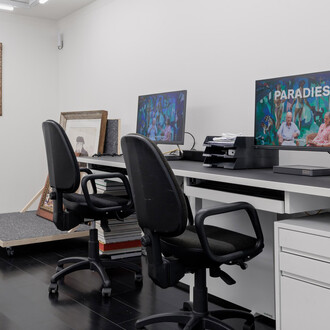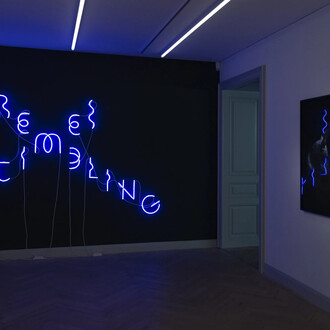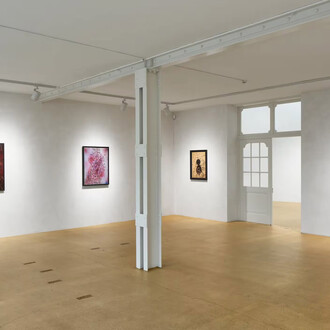Gap in the clouds marks a subtle yet decisive turning point in Henrik Eiben's work, who unveils here a new series of sculptures in which forms, materials, and colors come together in a controlled tension between precision and lightness.
Tinted glass, polished steel, carved wood, and textiles are meticulously interwoven to create volumes of apparent simplicity. Behind the apparent purity of the lines lies a work of artistry that is both precise and intuitive. The elements are adjusted to the millimeter, but something resists perfection: an all-too-human inclination, an unexpected curve, a tension between two materials that nothing seemed to call for coexisting. The glass captures the light and then rejects it; the metal reflects a hue that is not its own. Nothing is fixed, everything is in transition.
While he echoes certain references to minimalism—Fred Sandback or Donald Judd come to mind—Eiben subtly departs from it. Where minimalism seeks neutrality, he introduces displacement, rhythm, and nuance. Form becomes a tool for visual exploration rather than an object in itself. The work does not present itself as a single entity, but evolves according to angle, light, and distance.
In this space, the distinctions between sculpture and painting become secondary. A three-dimensional structure can evoke a floating line; a textile surface, a flat pictorial plane. Some pieces seem almost to levitate, while others suggest movement frozen in time. The viewing experience is dynamic, changing, and requires sustained attention.
Gap in the clouds is this opening in perception, this moment when something escapes immediate interpretation. The works do not seek to impose a discourse, but to generate a space for active observation. They offer a form of complex clarity, both physical and sensitive.
Here, balance is not a destination but an intermediate state, between construction and instability. And it is precisely in this tension that the strength of Henrik Eiben's work lies.













